Marketing Goals
Feb 13, 2024
By Ari Manor , CEO at ZOOZ

This is one in a series of articles that provide detailed and updated information about Marketing. In this specific article, which focuses on Marketing Goals, you can read about:
- What are the Goals of Marketing?
- Is Marketing Still Relevant?
- Can Marketing Be Used to Increase Social Awareness?
- Can Marketing Change the World
- Can Marketing Save the Planet?
- Why Marketing Campaigns Fail
- Marketing Myopia
- When Marketing Goes Wrong
For additional articles about Marketing, see the Topic Menu.

What are the Goals of Marketing?
The goals of marketing extend beyond simply selling a product or service; they encompass a broad range of objectives that collectively contribute to the overall success and growth of a business. Understanding these goals is crucial for developing effective marketing strategies that align with a company's broader objectives.
Here are some of the primary goals of marketing:
- Building Brand Awareness: Increasing visibility and recognition of the brand among potential customers. The aim is to make the brand a top-of-mind choice in its category.
 Case Study: Death Wish Coffee's Super Bowl Ad
Case Study: Death Wish Coffee's Super Bowl Ad- Company: Death Wish Coffee, Saratoga Springs, NY, USA (2016)
- What Was Done: Death Wish Coffee won Intuit's "Small Business, Big Game" contest, earning a 30-second Super Bowl ad. The company used this opportunity to market its brand as the producer of the world's strongest coffee, focusing on reaching a broader audience.
- Results/Impact: The Super Bowl ad led to a significant increase in sales, with a 430% rise in traffic to their website and a 375% increase in sales on Amazon on the day of the Super Bowl. This exposure was pivotal in transforming Death Wish Coffee from a small business to a nationally recognized brand.
- Generating Leads and Attracting Customers: Capturing the interest of potential customers and converting that interest into leads that can be nurtured towards making a purchase.
- Enhancing Customer Engagement: Fostering a deeper connection with customers through meaningful communication and interaction, which can lead to increased loyalty and brand advocacy.
- Establishing and Maintaining Brand Reputation: Shaping positive perceptions of the brand among customers, stakeholders (employees and shareholders), suppliers and the broader public. A strong reputation builds trust and credibility.
- Driving Sales and Increasing Revenue: Ultimately, marketing aims to boost sales and revenue by persuasively communicating the value proposition of the brand's offerings to encourage purchase decisions.
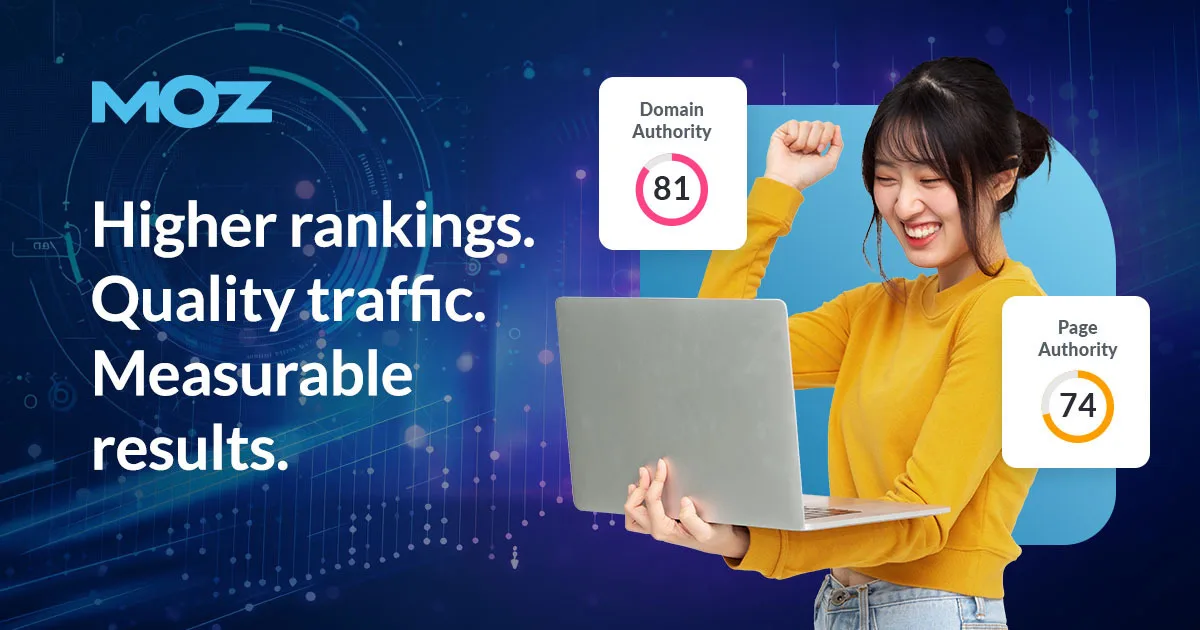 Case Study: Moz's SEO Software Development
Case Study: Moz's SEO Software Development- Company: Moz, Seattle, WA, USA (2014)
- What Was Done: Moz developed and marketed comprehensive SEO tools that addressed specific needs within the SEO and digital marketing community. They provided valuable resources, including educational content and free tools to attract users to their platform, focusing on increasing brand awareness and user engagement.
- Results/Impact: As a result of their targeted marketing efforts, Moz significantly increased its user base, with subscription revenues seeing a marked increase. Their focus on education and utility led to a 25% year-over-year growth in subscription services, establishing Moz as a go-to resource in the SEO industry.
- Market Expansion: Identifying and developing new markets for the brand's products or services, whether by targeting new demographics, expanding into new geographical areas, or exploring new channels for distribution.
- Enhancing Customer Experience: Improving all aspects of the customer's interaction with the brand to ensure satisfaction, repeat business, and positive word-of-mouth.
- Supporting Product Development: Gathering market insights and customer feedback to inform the development of new products or the improvement of existing ones, ensuring they meet customer needs and preferences.
- Increasing Market Share: Gaining a larger portion of the market by outperforming competitors through superior marketing strategies and execution.
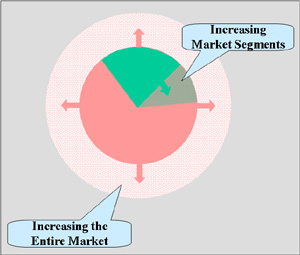 Note: Identifying whether the primary aim is to broaden the entire market (thus advocating for a broad solution category, like smartphones) or to boost a particular brand's market share (for instance, specifically promoting the iPhone brand) is essential from the outset. This decision typically depends on which goal is expected to yield quicker and more significant growth for the company. For each selected objective—be it market expansion or increasing brand market share—specific messaging and promotional strategies are necessary. Additionally, for accelerated growth, it's advisable not to pursue both goals at the same time. More about this market share vs. entire market dilemma – here.
Note: Identifying whether the primary aim is to broaden the entire market (thus advocating for a broad solution category, like smartphones) or to boost a particular brand's market share (for instance, specifically promoting the iPhone brand) is essential from the outset. This decision typically depends on which goal is expected to yield quicker and more significant growth for the company. For each selected objective—be it market expansion or increasing brand market share—specific messaging and promotional strategies are necessary. Additionally, for accelerated growth, it's advisable not to pursue both goals at the same time. More about this market share vs. entire market dilemma – here.
- Educating Customers: Providing customers with the information they need to make informed purchasing decisions, thereby positioning the brand as a trusted advisor in its field.
- Advocating for Social Responsibility: Leveraging marketing efforts to promote social, ethical, and environmental causes aligned with the brand's values, thus contributing to a positive social and/or environmental impact. This can enhance brand loyalty amongst customers as well as amongst employees.
- Measuring and Analyzing Performance: Continuously monitoring and analyzing marketing activities to understand their effectiveness, make data-driven decisions, and optimize future strategies for better results.
By pursuing these goals, marketing helps to not only drive immediate business results but also build a strong foundation for long-term success, resilience, and growth. Effective marketing strategies are those that are holistic, considering the wide array of objectives that marketing can achieve, and tailored, reflecting the unique needs and circumstances of the business and its customers.
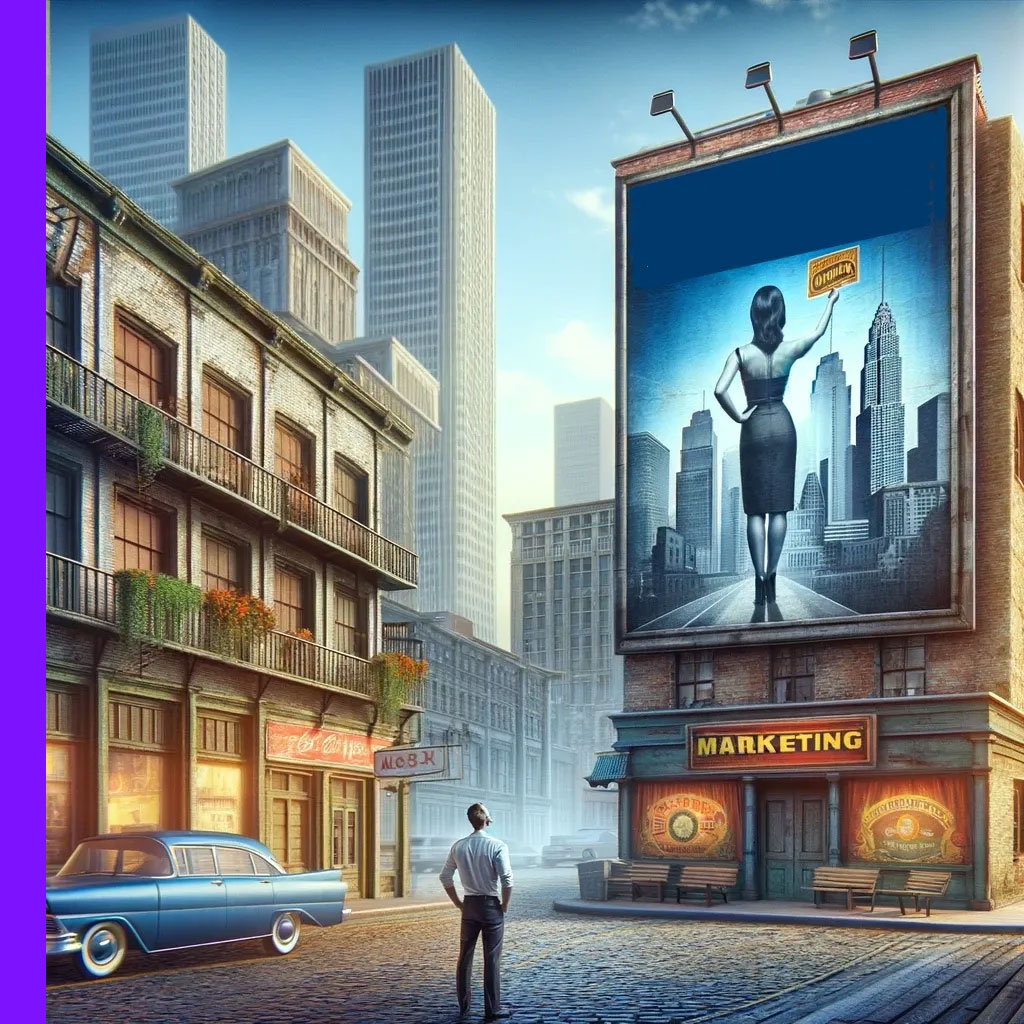
Is Marketing Still Relevant?
In today's rapidly evolving marketplace, questioning the relevance of marketing is understandable, especially with the rise of new technologies and changing consumer behaviors. However, marketing remains not just relevant but essential for several compelling reasons. As a marketing expert, I can affirm that the discipline's core functions have adapted and expanded to meet new challenges and opportunities, making it more vital than ever. Here's why:
- Consumer Engagement: The digital age has transformed how consumers interact with brands. Marketing leverages social media, content, and digital strategies to engage consumers directly and personally, fostering stronger connections and brand loyalty.
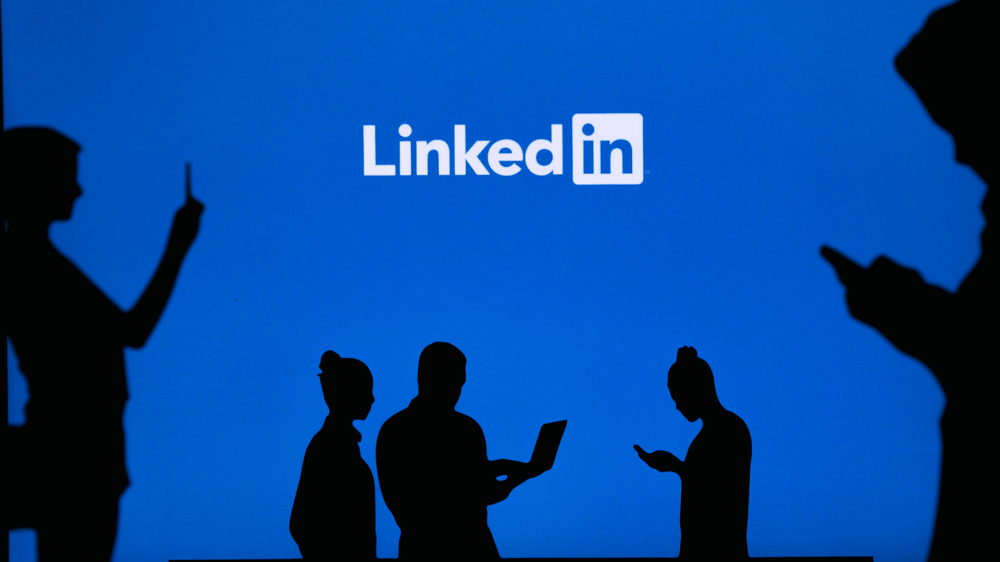 Case Study:
Case Study:
LinkedIn's Content Marketing Strategy- Company: LinkedIn, Sunnyvale, CA, USA (ongoing)
- What Was Done: LinkedIn leveraged content marketing by encouraging users to publish articles and insights on its platform. This strategy was designed to increase user engagement and time spent on the site, positioning LinkedIn not just as a networking tool but also as a valuable content resource.
- Results/Impact: This approach resulted in a substantial increase in daily active users and content engagement. LinkedIn reported a 60% year-over-year increase in content shared, significantly boosting ad revenue and user interaction on the platform.
- Brand Differentiation: With increasing market saturation, standing out is crucial. Marketing creates and communicates a brand's unique value proposition, distinguishing it from competitors and capturing the attention of target audiences.
- Adaptation to Market Changes: Marketing's agility allows businesses to quickly respond to market changes, consumer trends, and technological advancements, ensuring the brand remains relevant and competitive.
- Driving Business Growth: Effective marketing strategies drive sales and business growth by reaching new customers, entering new markets, and launching new products successfully.
 Case Study:
Case Study:
Echobox's AI-Powered Social Media Optimization- Company: Echobox, London, UK (2018)
- What Was Done: Echobox developed an AI-powered tool that optimizes the timing and content of social media posts for publishers and media companies. Their marketing emphasized the potential for AI to revolutionize social media engagement, targeting publishers looking to increase their digital presence.
- Results/Impact: Following the launch of their marketing campaign, Echobox saw a 300% increase in client acquisition rate. Publishers using Echobox reported, on average, a 71% increase in traffic from social media, showcasing the relevancy and impact of modern marketing strategies that leverage AI.
- Building Brand Reputation and Trust: Through service excellence (controlled by the marketing department), ethical marketing practices and social responsibility initiatives, businesses can build trust and a positive reputation among consumers, which are critical for long-term success.
- Customer Insights and Innovation: Marketing involves continuous market research and analysis, providing businesses with valuable insights into consumer needs and preferences, which can drive innovation and product development.
- Personalization and Customer Experience: Modern marketing tools and data analytics enable personalized marketing, enhancing the customer experience by delivering relevant content and offers to the right audience at the right time and place.
- Digital Transformation: The shift towards digital platforms has made digital marketing an indispensable tool for reaching online audiences, utilizing SEO, content marketing, and digital advertising to achieve business objectives.
- Sustainability and Social Impact: Consumers increasingly prefer brands that demonstrate social and environmental responsibility. Marketing communicates a brand's efforts in sustainability, appealing to the values of modern consumers.
- Integrated Marketing Communications: Coordinating various marketing channels and tools ensures a consistent message across all platforms, enhancing brand coherence and maximizing impact.
In conclusion, marketing's relevance has not diminished; rather, it has evolved and diversified in response to the digital era and changing consumer expectations. It continues to play a critical role in connecting businesses with their customers, building brand equity, and driving growth, making it an indispensable element of modern business strategy.
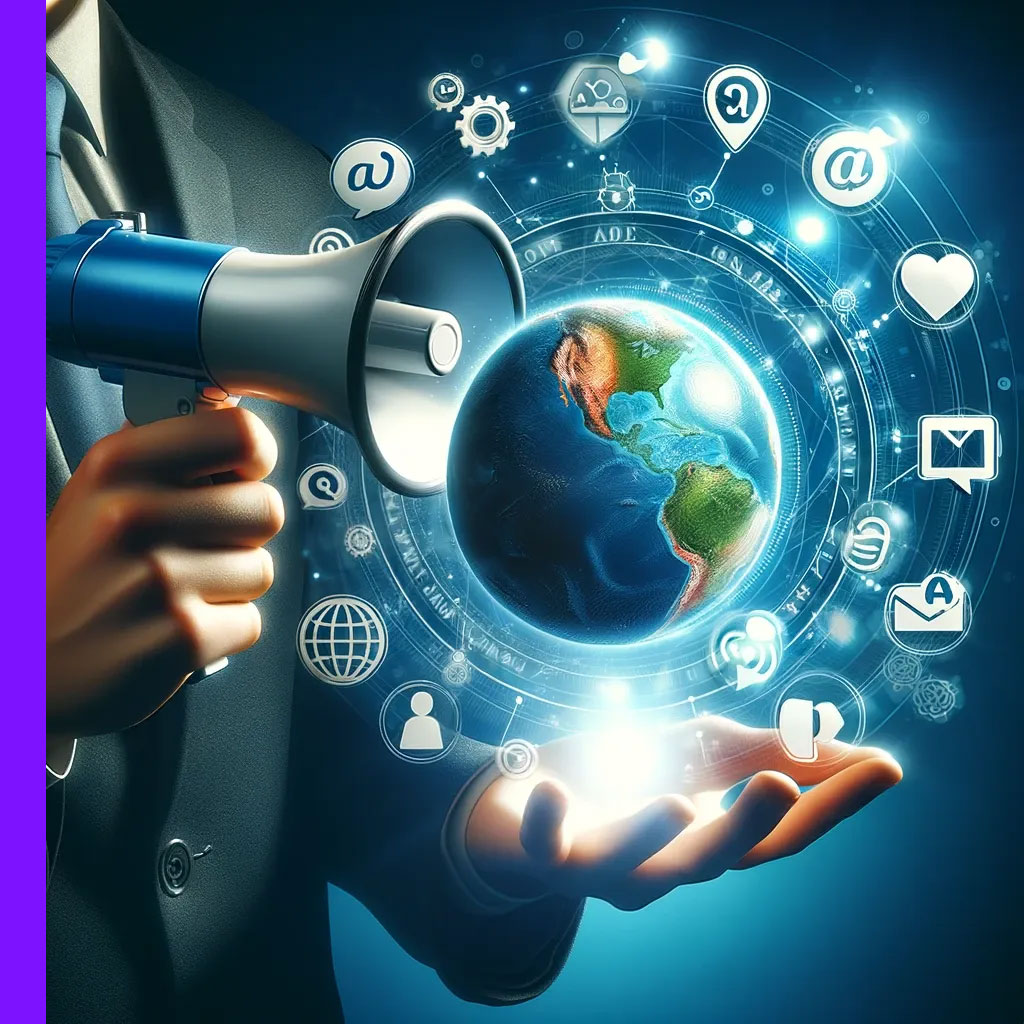
Can Marketing Be Used to Increase Social Awareness?
Marketing has a profound capacity to elevate social awareness, leveraging its reach and influence to shed light on critical issues and drive meaningful change. As an integral tool for communication, education, and advocacy, marketing transcends its traditional business role, proving instrumental in promoting social causes and contributing to the betterment of society.
Here’s how marketing can be effectively used to increase social awareness:
- Educational Campaigns: Marketing can inform and educate the public on critical social, health, and environmental issues. Through informative campaigns, organizations can spread knowledge and inspire action on topics ranging from public health initiatives to environmental conservation.
- Cause Marketing: Businesses often collaborate with non-profits or engage in campaigns that support social causes. By aligning with social issues, brands can not only raise awareness but also demonstrate their commitment to making a positive impact, enhancing their corporate social responsibility (CSR) profile.
- Social Media Advocacy: Leveraging the virality and wide reach of social media platforms, marketers can amplify messages related to social causes, engaging a vast audience quickly and effectively. Social media allows for real-time interaction, fostering a community of supporters and advocates.
 Case Study: Always' #LikeAGirl Campaign
Case Study: Always' #LikeAGirl Campaign- Company: Always, Worldwide (2014)
- What Was Done: Always launched the #LikeAGirl campaign to challenge gender stereotypes and boost confidence among young women. The campaign used social media and video content to provoke discussions on the negative impacts of the phrase "like a girl" and aimed to transform it into a positive affirmation.
- Results/Impact: The campaign video received over 90 million views worldwide, significantly increased Always' brand awareness, and contributed to a noticeable shift in the conversation around female empowerment and self-esteem. Surveys conducted pre and post-campaign indicated a dramatic increase in positive associations with the phrase "like a girl."
- Influencer Partnerships: Collaborating with influencers who share a genuine passion for specific causes can magnify the message’s reach and authenticity. Influencers can function as trusted voices, motivating their followers to learn more and take action.
- Content Marketing: By creating valuable and relevant content focused on social issues—such as blog posts, videos, and podcasts—organizations can engage audiences in a deeper conversation, providing insights and solutions that address societal challenges.
- Public Service Announcements (PSAs): PSAs are designed to inform the public and promote behaviors that benefit society. Through compelling storytelling and creative presentation, marketing can effectively communicate the importance of social issues to a wide audience.
- Event Sponsorship and Participation: Sponsoring or participating in events related to social causes can enhance visibility and awareness, both for the cause and the participating brands. Events offer a platform for direct engagement and education on a large scale.
- Customer Engagement: Encouraging customers to participate in social cause campaigns, whether through donations, volunteering, or sharing messages, can significantly amplify the impact and reach of social awareness efforts.
- Advocacy Through Brand Messaging: Integrating social causes into brand messaging and values can make social awareness an intrinsic part of a brand’s identity, influencing customers and stakeholders who share similar values.
- A good example for this: KIND energy bars – a brand whose mission is “creating a kinder and healthier world.
 Case Study:
Case Study:
Lush Cosmetics' Anti-Palm Oil Campaign- Company: Lush Cosmetics, Worldwide (2008)
- What Was Done: Lush Cosmetics launched a campaign against the use of palm oil in the cosmetics industry due to its environmental impact, particularly on rainforests and orangutan habitats. The campaign included in-store education, product reformulations to remove palm oil, and engaging content across their platforms.
- Results/Impact: The campaign led to increased consumer awareness about the issue, with Lush seeing a surge in support from their community. Following the campaign, Lush successfully removed palm oil from all its products, demonstrating the company's commitment to environmental issues and influencing other companies to consider more sustainable practices.
- A good example for this: KIND energy bars – a brand whose mission is “creating a kinder and healthier world.
- Transparency and Reporting: By being transparent about their own practices and contributions towards social causes, businesses can encourage a culture of accountability and inspire other organizations to take action.
Marketing, when used ethically and creatively, can thus serve as a powerful catalyst for social change, raising awareness on vital issues and mobilizing individuals and communities towards collective action. Its ability to connect, influence, and inspire makes marketing an invaluable ally in the quest for a more informed and conscientious society.
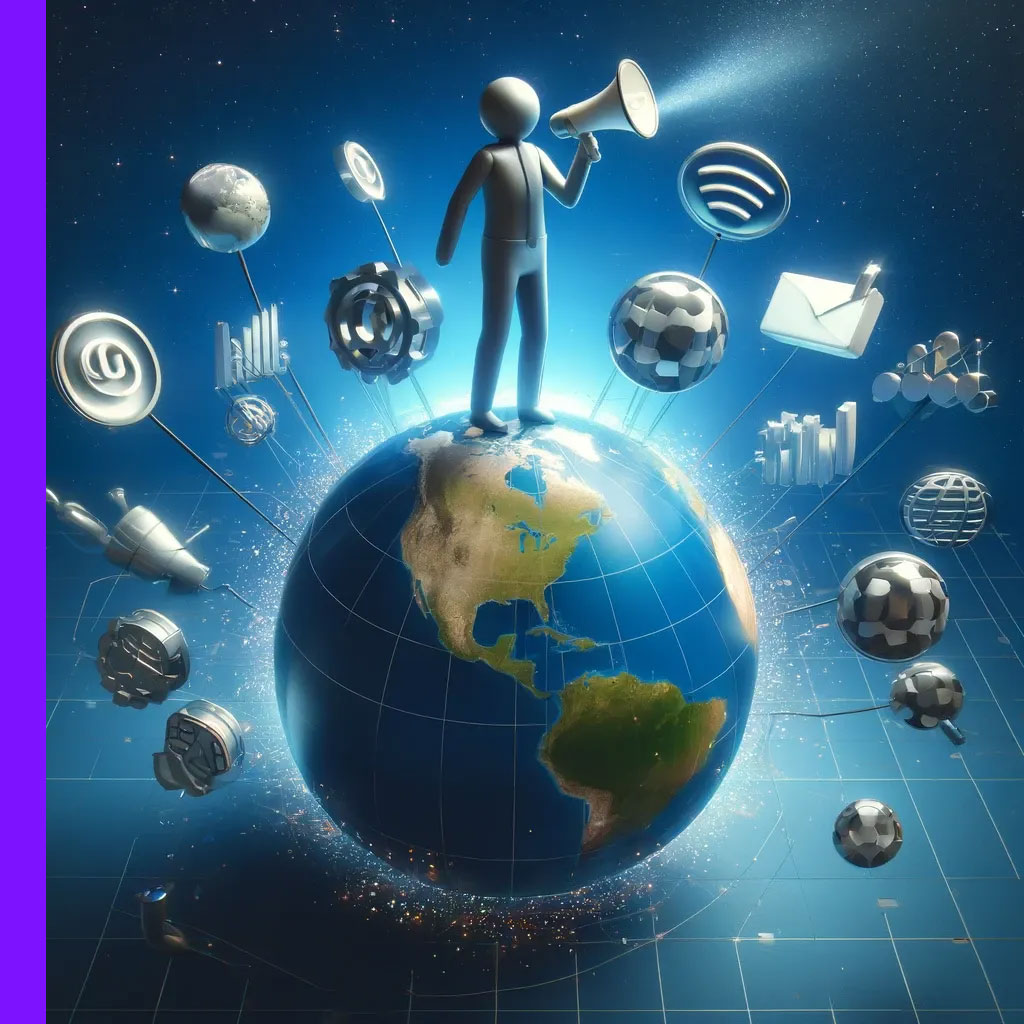
Can Marketing Change the World
Marketing holds the transformative power to change the world, influencing societal norms, behaviors, and even policies. Its reach and impact extend far beyond the traditional goals of promoting products or services, venturing into realms that can spark significant social change. Here's how marketing can be a catalyst for global transformation:
- Raising Awareness on Global Issues: Marketing campaigns can spotlight critical issues such as climate change, poverty, and inequality, drawing public attention and galvanizing action. By elevating these topics in the public discourse, marketing can inspire individuals and communities to engage in solutions.
- Promoting Sustainable Practices: Through green marketing initiatives, companies can encourage consumers to adopt more sustainable behaviors, such as recycling, using eco-friendly products, and reducing carbon footprints. These campaigns not only raise awareness but also drive demand for sustainable products, influencing industry standards and practices.
 Case Study: Patagonia's "Don't Buy This Jacket" Campaign
Case Study: Patagonia's "Don't Buy This Jacket" Campaign- Company: Patagonia, Ventura, CA, USA (2011)
- What Was Done: In a bold move, Patagonia launched the "Don't Buy This Jacket" campaign, urging consumers to consider the environmental impact of their purchases and to buy only what they needed. The campaign ran in The New York Times on Black Friday and was supported by an extensive online and in-store educational effort about sustainable practices.
- Results/Impact: Despite its counterintuitive message, the campaign led to a 30% increase in Patagonia's sales in the following year. It significantly enhanced Patagonia's reputation as an environmentally responsible brand and sparked widespread discussion on consumerism and sustainability in the fashion industry.
- Driving Social Change: Marketing has the power to challenge and change societal norms and values. Campaigns promoting diversity, equality, and inclusion can influence public perceptions and behaviors, contributing to a more inclusive and equitable society.
- Supporting Nonprofits and Causes: By partnering with nonprofit organizations and leveraging their platforms, businesses can amplify the reach of social, environmental, and humanitarian causes. This collaboration can increase fundraising, volunteer efforts, and overall awareness for critical issues.
 Case Study: TOMS Shoes' One for One Campaign
Case Study: TOMS Shoes' One for One Campaign- Company: TOMS Shoes, Los Angeles, CA, USA (2006)
- What Was Done: TOMS Shoes launched its One for One campaign, promising to donate a pair of shoes to a child in need for every pair sold. The campaign was heavily marketed through social media, storytelling, and partnerships, highlighting the impact of consumers' purchases.
- Results/Impact: The campaign significantly boosted TOMS' sales and brand recognition. As of 2019, TOMS has donated over 95 million pairs of shoes. The campaign not only transformed the brand's image but also set a precedent for social entrepreneurship, inspiring other businesses to adopt cause-driven models.
- Encouraging Healthy Behaviors: Public health campaigns use marketing strategies to promote healthier lifestyle choices, such as quitting smoking, exercising more, and eating healthily. These campaigns can have a profound impact on public health outcomes.
- Influencing Policy and Legislation: Marketing campaigns that mobilize public opinion on issues like environmental protection, public health, and human rights can influence policymakers and lead to changes in legislation and public policy.
- Empowering Consumers: Marketing educates and empowers consumers by providing information that allows them to make informed decisions about the products they buy and the companies they support. This consumer empowerment can drive companies to act more responsibly and ethically.
- Fostering Global Connections: In today's digital age, marketing can connect people across the globe around common causes and challenges, fostering a sense of global community and shared responsibility.
- Innovating for Good: Marketing can promote technological and social innovations that address global challenges, highlighting new solutions and encouraging investment and support for these innovations.
- Building Movements: Successful marketing campaigns can build and sustain movements for change, rallying people around shared goals and encouraging collective action on a large scale.
In essence, marketing possesses the unique ability to not just sell, but to inform, inspire, and mobilize. When harnessed with intention and ethical considerations, it can indeed change the world, driving progress towards a more sustainable, equitable, and healthy global society.

Can Marketing Save the Planet?
Marketing possesses the potential to significantly contribute to environmental conservation and sustainability efforts, making it a powerful tool in the quest to save the planet. By influencing consumer behavior, corporate strategies, and public opinion, marketing can play a crucial role in driving environmental action and promoting sustainable practices. Here's how marketing can help in the effort to save the planet:
- Promoting Environmental Awareness: Marketing campaigns can raise public awareness about environmental issues such as climate change, deforestation, and pollution, highlighting the urgency of these crises and the need for immediate action.
- Advocating for Sustainable Products: By showcasing the benefits of eco-friendly products and services, marketing can encourage consumers to make more sustainable choices, driving demand for products that have a lower environmental impact.
 Case Study: Who Gives A Crap's Eco-Friendly Products
Case Study: Who Gives A Crap's Eco-Friendly Products- Company: Who Gives A Crap, Online (2012)
- What Was Done: Who Gives A Crap started with a direct-to-consumer marketing model for their environmentally friendly toilet paper, made from 100% recycled paper and bamboo. Their launch campaign featured the founder sitting on a toilet in a crowdfunding video that highlighted their mission to build toilets for those in need.
- Results/Impact: The launch campaign went viral, helping the company reach its crowdfunding goal within 50 hours. The company has since donated over $8 million to sanitation projects around the world, demonstrating the impact of marketing on both environmental sustainability and global sanitation issues.
- Encouraging Corporate Responsibility: Marketing can highlight and celebrate companies that implement sustainable practices, encouraging other businesses to follow suit in order to maintain competitive advantage and meet consumer expectations for sustainability.
- Facilitating Behavior Change: Through persuasive communication, marketing can motivate individuals to adopt more sustainable behaviors, such as recycling, conserving water, and reducing energy consumption.
- Supporting Green Innovation: Marketing can help bring attention to innovative green technologies and solutions, attracting investment and consumer interest, which can accelerate their adoption and impact.
- Building Sustainable Brands: By integrating sustainability into brand identities, companies can not only reduce their environmental footprint but also build loyalty among consumers who prioritize environmental values.
- Mobilizing Community Action: Marketing campaigns can inspire collective action on environmental issues, organizing community clean-ups, conservation projects, and other initiatives that have a direct positive impact on the planet.
 Case Study: IKEA's Sustainable Living Project
Case Study: IKEA's Sustainable Living Project- Company: IKEA, Worldwide (2018)
- What Was Done: IKEA launched a wide-reaching marketing campaign focused on sustainable living, promoting products designed for energy savings, water conservation, and waste reduction. The campaign utilized online platforms, in-store displays, and interactive workshops to educate consumers on making more sustainable choices at home.
- Results/Impact: The campaign significantly increased sales of IKEA's sustainable product lines, with a reported 58% increase in sales for products contributing to a more sustainable life at home. IKEA's efforts also boosted its brand image as a leader in sustainability, aligning with consumer values on environmental responsibility.
- Influencing Policy: By galvanizing public support for environmental protection, marketing efforts can influence policymakers to enact stronger environmental regulations and policies.
- Driving Transparency: Marketing can demand and showcase transparency in how products are made, highlighting supply chain sustainability, and pushing industries towards more ethical and environmentally friendly practices.
- Championing Renewable Energy: Through promoting the benefits and feasibility of renewable energy sources, marketing can play a key role in the transition towards cleaner, more sustainable energy systems.
While marketing alone cannot save the planet, it is an essential part of the broader collective effort needed to address environmental challenges. Through strategic and responsible marketing, businesses, governments, and NGOs can inspire the societal shift necessary to achieve a more sustainable future for our planet.

Why Marketing Campaigns Fail
Marketing campaigns can fail for a variety of reasons, often due to a combination of strategic missteps, execution errors, and external factors. Understanding these common pitfalls can help marketers design more effective campaigns in the future.
Here are some key reasons why marketing campaigns might not achieve their desired outcomes:
- Wrong Marketing Strategy: If the selected target audience, unique selling preposition and differentiation, pricing, placement, promotion offer, marketing channels, and other components of the strategy are mostly wrong, the campaign is bound to fail, even before it started.
- Lack of Clear Objectives: Without specific, measurable, achievable, relevant, and time-bound (SMART) goals, it's challenging to guide the campaign or measure success.
- Poor Understanding of the Target Audience: Failing to thoroughly research and understand the target audience's needs, preferences, and behaviors can lead to messages that don't resonate.
 Case Study: Sony's PSP Graffiti Campaign Backlash
Case Study: Sony's PSP Graffiti Campaign Backlash- Company: Sony, Worldwide (2006)
- What Was Done: Sony launched an underground marketing campaign for its PlayStation Portable (PSP) device, involving graffiti artists painting PSP advertisements on buildings and structures in major cities. The campaign aimed to appeal to a younger, "hip" demographic but failed to obtain the necessary permissions for many of these public spaces, leading to legal issues and public outcry.
- Results/Impact: The campaign was met with widespread criticism for its unauthorized use of public and private property, with many seeing it as corporate vandalism rather than edgy marketing. The backlash required Sony to issue apologies and remove the graffiti, resulting in negative press and a loss of goodwill among the very demographic the campaign aimed to attract. This misstep highlighted the importance of ethical considerations in marketing campaigns and respecting community spaces.
- Inadequate Market Research: Skipping comprehensive market research can result in misreading market demand, overlooking competition, or misidentifying customer segments.
- Weak Value Proposition: If the campaign does not clearly articulate the unique benefits of the product or service, customers may not be compelled to engage or purchase.
- Budget Misallocation: Misallocating the budget, either by overspending on low-return activities or underfunding key aspects of the campaign, can cripple its effectiveness.
- Inconsistent Brand Messaging: Lack of consistency in brand messaging across different channels can confuse the audience and dilute brand identity.
- Neglecting Customer Journey: Not considering the customer journey in campaign design can lead to missed engagement opportunities or misaligned messaging.
- High “Friction” During Purchase Process: A complex, long or tedious buying process can deter potential clients, leading to abandoned transactions before completion.
- Overlooking Digital Marketing Channels: In today’s digital age, failing to leverage digital marketing channels appropriately can result in significant missed opportunities.
- Inflexibility: Failure to adapt to changing market conditions, feedback, or campaign performance data can prevent timely adjustments that might salvage or improve campaign outcomes.
- Ineffective Measurement and Analysis: Without setting up proper metrics for measurement and failing to analyze campaign data, it's difficult to identify what went wrong and how to improve.
- Ignoring Customer Feedback: Not listening to customer feedback during or after the campaign can lead to repeating the same mistakes or missing out on opportunities to improve.
Marketing campaigns require careful planning, valid marketing strategy, a deep understanding of the target audience, a strong value proposition, consistent messaging, and the flexibility to adapt based on performance data and feedback. By recognizing and addressing these common reasons for failure, marketers can increase their chances of success in future campaigns.

Marketing Myopia
Marketing Myopia is a concept first introduced by Theodore Levitt in his seminal article published in the Harvard Business Review in 1960. The term describes a short-sighted and inward-looking approach to marketing that focuses on the company's needs rather than the customers' needs and desires. Companies afflicted with marketing myopia tend to concentrate on selling products and services based on their own preferences, rather than adapting to the changing needs of the market or recognizing new opportunities for growth.
 Case Study:
Case Study:
Kodak's Delayed Entry into Digital Photography
- Company: Kodak, United States
- What Was Done: Kodak, a pioneer in photographic film, was slow to embrace digital photography despite having developed the first digital camera. This reluctance stemmed from a desire to protect its film business, underestimating the digital revolution in photography.
- Results/Impact: Kodak's hesitance to transition to digital photography, a prime example of marketing myopia, significantly impacted its business, leading to bankruptcy in 2012. By the time Kodak attempted to enter the digital market, competitors had already established dominance.
ollowing is a deeper look into the concept and its implications.
Key Characteristics of Marketing Myopia
- Product-Oriented Focus: Companies focus on their product and its features rather than on how it satisfies customer needs.
- Lack of Vision: There's a failure to see the broader industry trends and how they impact customer preferences and needs.
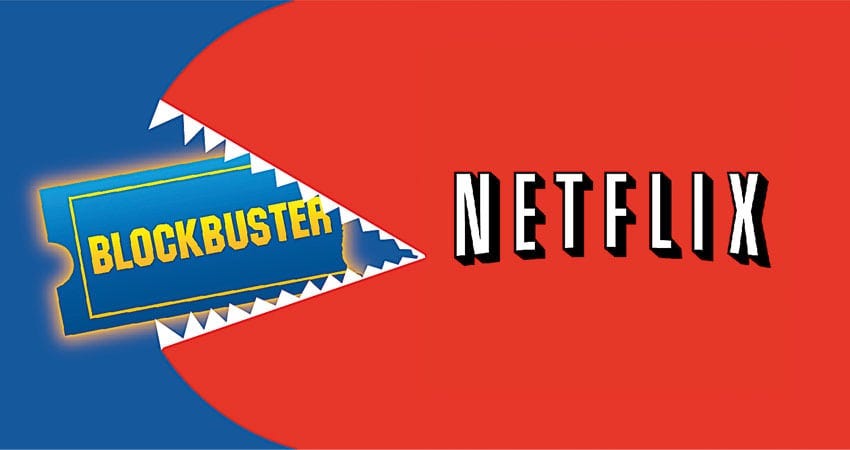 Case Study:
Case Study:
Blockbuster's Failure to Adapt to Digital Trends- Company: Blockbuster, United States
- What Was Done: Blockbuster, once a dominant force in the video rental industry, failed to adequately respond to changing consumer behaviors and technological advancements, notably the rise of digital streaming services like Netflix.
- Results/Impact: This oversight, a classic example of marketing myopia, led to Blockbuster's decline and eventual bankruptcy in 2010. The company's focus on traditional rental models without adapting to digital consumption trends resulted in a significant loss of market share.
- Resistance to Change: Companies are often reluctant to adapt to market changes, technological advancements, or shifts in consumer behavior.
- Emphasis on Short-Term Goals: A preference for immediate profit over long-term growth and sustainability.
Marketing Myopia is an Inherited Bias
- Too Close to See: Providers "live" their products and services and are emotionally attached to them. In contrast, these same products and services often play a minor and insignificant role in consumers' lives. Therefore, an inherent gap exists between providers' and customers' thoughts about, feelings related to, and attitudes towards products and services.
- Consulting Can Help: Indeed, one of the most critical, if not the most critical, roles of external marketing consultants are to bridge the inherent gap between an organization's internal team, often biased, and the external, less engaged customers. Good consultants offer a more neutral perspective on products and services and naturally tend to uncover and prioritize the consumer's voice.
Case Studies Demoistrating How We Helped Clients to Overcome Marketing Myopia
 Case Study: Sausages and usage habits
Case Study: Sausages and usage habits
- At ZOOZ (our marketing consultancy), during a product innovation workshop with a leading sausage manufacturer, we asked the participating managers how customers are supposed to store and cook the sausages, and how they actually do it. It turned out they always have a huge pot with boiled sausages (leftovers) in their factory dining room, and that they never researched this issue and have no idea how consumers store and cook sausages at home. We created a survey for them to investigate this issue, and found that:
- Consumers usually store sausages frozen in their freezer, while it is better to store them chilled in their refrigerator (the vacuum packaging allows for 6 months of safe storage in the refrigerator).
- Many consumers use a microwave or toaster oven to heat the sausages.
- Other consumers boil the sausages with water, whereas sausages only need heating since they are pre-cooked at the factory. Boiling the water first, then turning off the fire and only then placing the sausages in this warm water preserves the flavor better.
- The management team was surprised to learn all this about their customers, which demonstrates a typical case of Marketing Myopia.
 Case Study: A support call center that no one calls
Case Study: A support call center that no one calls
- One of the top 10 global brands established a support call center for newly registered users, aimed at facilitating their onboarding and effective use of online provided services. These services required complex analytical skills to achieve significant results and remain subscribed. Despite extensive marketing efforts and substantial budgets to promote the new support center across various marketing channels, no one reached out for assistance. The marketing team, baffled and frustrated, sought our consultancy. Our analysis and recommendations were straightforward:
- Small business owners typically lack the time to contact support centers.
- Furthermore, many have had negative experiences with support centers of large corporations, including long waiting times and low-quality support, making them hesitant to engage with another one.
- The brand's team was surprised by our feedback, asserting, "We're not like other big corporates. We've allocated a highly trained support team and sufficient representatives to eliminate any wait times."
- "Yes," we responded, "but your customers aren't aware of this, which is why they won't call."
- The gap between what the team KNEW about their call center and customers’ PERCEPTIONS of it is another demonstration of Marketing Myopia. External help was needed to bridge this gap.
- "So, what should we do?" they inquired.
- "The solution is simple," we advised. "Instead of waiting for new users to call your support center, take the initiative to call them using the phone number they provided upon registration, and offer help. This proactive approach will convince them of your genuine availability."
- Following our advice, they first trialed this method in one country before rolling it out globally, leveraging the scalability that comes as a significant advantage for global brands.
Consequences of Marketing Myopia
- Decreased Market Share: Companies may lose out to competitors who are more attuned to the market's needs.
- Obsolescence: Products or services may become outdated as industry standards and consumer preferences evolve.
- Missed Opportunities: Failing to recognize and adapt to market trends can result in missed opportunities for innovation and expansion.
- Wasted Resources: Due to Marketing Myopia, companies may invest in solving issues their customers do not have, instead of catering to their real needs.
Overcoming Marketing Myopia
- Customer Focus: Shift from a product-centric to a customer-centric approach, prioritizing the needs and desires of the customer.
- Innovative Thinking: Encourage innovation and flexibility in product development, marketing strategies, and business models.
- Broad Vision: Develop a broader view of the industry to identify future trends, challenges, and opportunities.
- Sustainable Practices: Invest in practices that ensure long-term growth and adaptability rather than just short-term gains.
Examples and Application
- Levitt's concept of marketing myopia has been applied across various industries to illustrate how companies can fail by not adapting to market needs.
- For example, the railroad industry's decline was attributed to its focus on trains as the product rather than transportation as the service, missing the rise of cars, trucks, and airplanes.
In summary, marketing myopia serves as a cautionary concept, reminding businesses to stay customer-focused, forward-thinking, and adaptable to sustain growth and competitiveness. It underscores the importance of understanding the market, recognizing changes in consumer behavior, and being open to innovation to avoid obsolescence and foster long-term success.
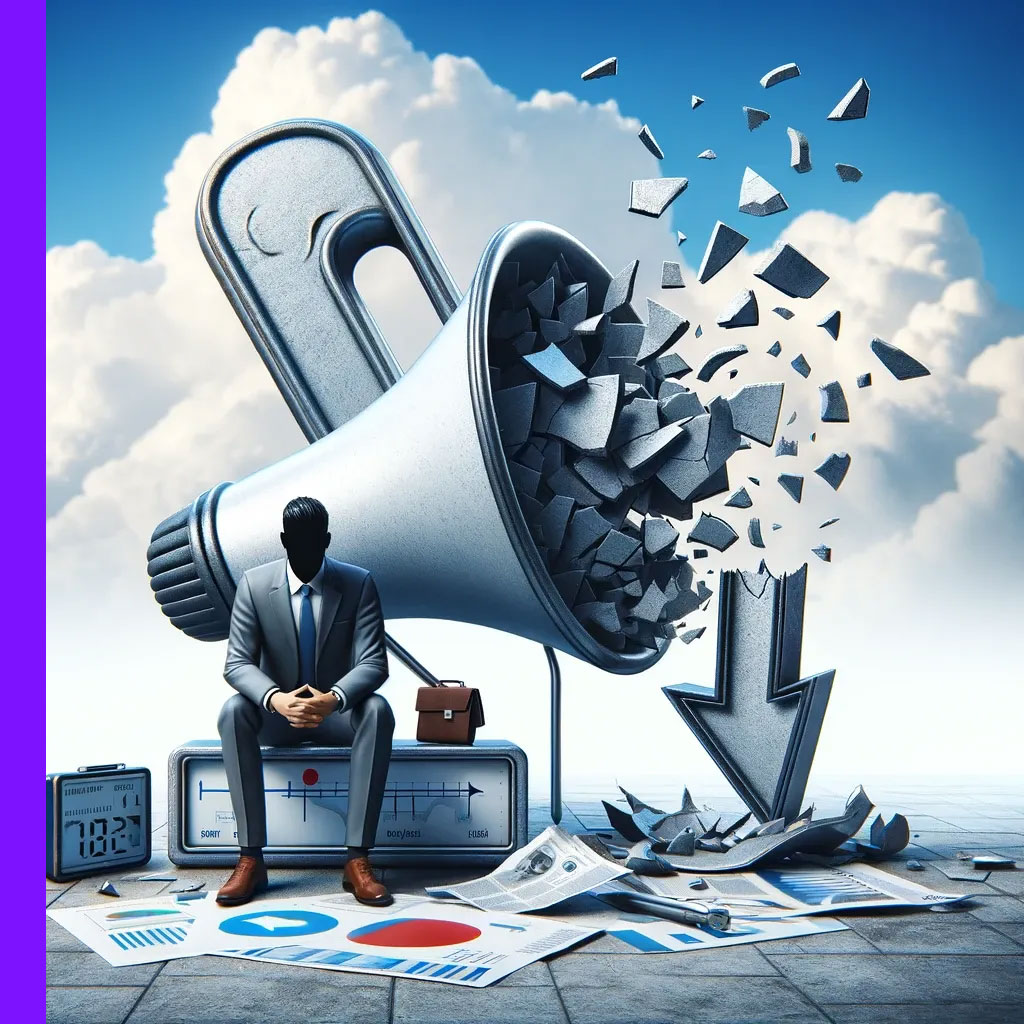
When Marketing Goes Wrong
When marketing goes wrong, it can lead to a range of negative outcomes for a business, from tarnished brand reputation to financial losses and disengaged customers. Understanding the common pitfalls can help marketers navigate challenges more effectively. Here are key instances when marketing can go awry and the potential impacts:
- Misunderstanding the Audience: Failing to accurately research and understand the target audience can lead to campaigns that miss the mark, offend, or simply fail to engage. This often results from inadequate market research or misinterpreting customer data.
- Off-Brand Messaging: When campaign messages do not align with the brand's values or identity, it can confuse customers and dilute brand equity. Consistency in messaging is crucial to maintain trust and brand recognition.
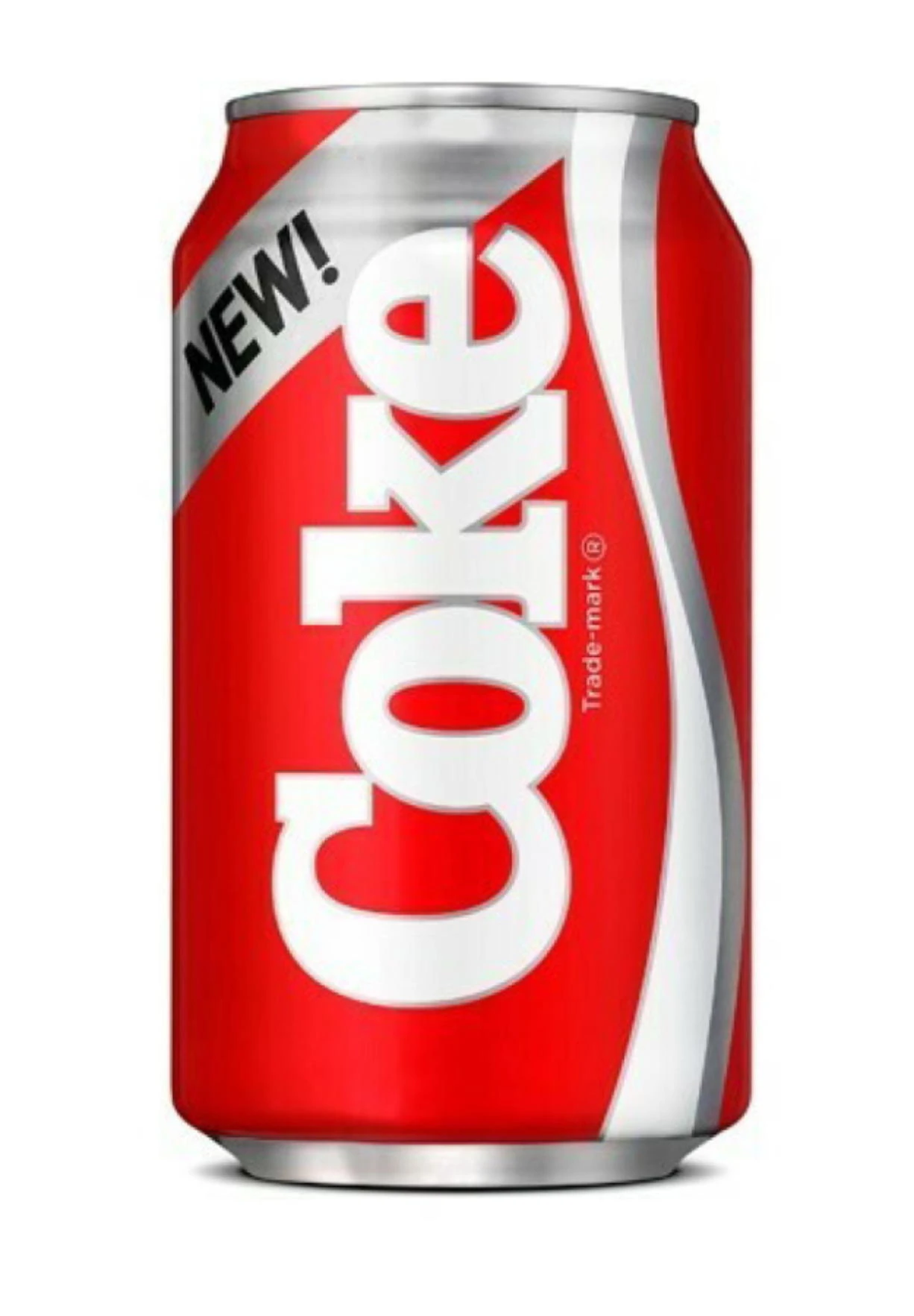 Case Study: New Coke's Unsuccessful Launch
Case Study: New Coke's Unsuccessful Launch- Company: Coca-Cola, USA (1985)
- What Was Done: In an attempt to rejuvenate the brand and combat declining market share, Coca-Cola introduced New Coke, a sweeter version of its classic formula. The launch was supported by a massive marketing campaign, confident that taste tests had favored the new formula. However, the campaign overlooked the emotional attachment consumers had to the original formula, leading to a public relations disaster.
- Results/Impact: The backlash from consumers was immediate and vehement, leading Coca-Cola to reintroduce the original formula as "Coca-Cola Classic" just 79 days after New Coke's launch. The company suffered significant financial losses and brand damage, though interestingly, the debacle ultimately reinforced the strong brand loyalty of Coca-Cola customers, contributing to a resurgence in sales of Coca-Cola Classic.
- Overpromising and Underdelivering: Exaggerating the benefits of a product or service can lead to unmet customer expectations, dissatisfaction, and damage to credibility. It's vital to ensure that marketing claims are realistic and substantiated.
 Case Study:
Case Study:
Hoover's Free Flights Promotion Disaster
- Company: Hoover, UK (1992)
- What Was Done: Hoover launched a promotional campaign offering two free international flights with every purchase exceeding £100. The campaign failed to anticipate the overwhelming response, leading to a logistical nightmare where demands could not be met, and the cost far exceeded projections.
- Results/Impact: The promotion led to a loss estimated at £50 million, multiple lawsuits, a damaged reputation, and the eventual sale of Hoover's UK division. This case remains a cautionary tale about the importance of careful planning and risk assessment in marketing promotions.
- Company: Hoover, UK (1992)
- Ignoring Customer Feedback: Not listening to or acknowledging customer feedback, especially if it's negative, can escalate dissatisfaction and lead to public relations issues. Engaging with customers and addressing their concerns is essential for maintaining positive relationships.
- Cultural Insensitivity: Marketing that fails to consider cultural differences can offend target audiences, particularly in global campaigns. Sensitivity and adaptability to cultural norms and values are necessary to avoid alienating potential customers.
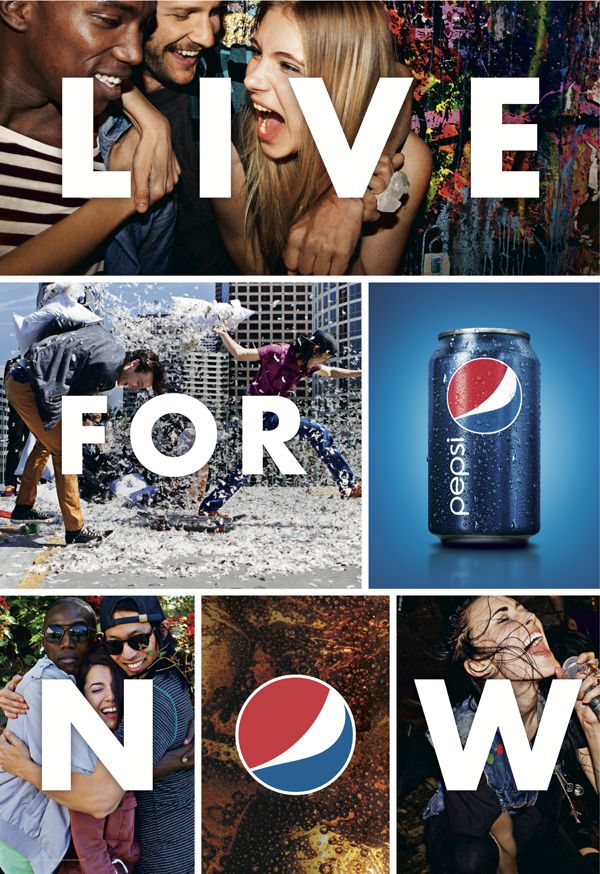 Case Study: Pepsi's "Live For Now" Campaign Misfires
Case Study: Pepsi's "Live For Now" Campaign Misfires- Company: Pepsi, Worldwide (2017)
- What Was Done: Pepsi launched the "Live For Now" campaign featuring Kendall Jenner in a commercial that aimed to evoke unity, peace, and understanding. The ad showed Jenner leaving a photoshoot to join a protest, ultimately handing a Pepsi to a police officer, which was intended to be a moment of unity. However, the campaign was criticized for trivializing social movements and protests, leading to a public backlash.
- Results/Impact: The negative response was swift, with significant backlash on social media and other platforms, leading Pepsi to pull the ad within 24 hours of its launch. Pepsi issued an apology stating they missed the mark and did not intend to make light of serious issues. The incident serves as a reminder of the importance of understanding cultural sensitivities and the potential consequences of not doing so.
- Inadequate Crisis Management: A lack of preparedness for managing marketing crises, such as backlash from an ad or negative publicity, can exacerbate the situation. Having a crisis management plan is essential for quick and effective response.
- Neglecting Digital Marketing Trends: Failing to keep up with digital marketing trends and technological advancements can put a business at a competitive disadvantage. Staying informed and adaptable is crucial in a rapidly evolving digital landscape.
- Poor Timing: Launching campaigns at inappropriate times, without considering current events or market conditions, can result in campaigns being overlooked or deemed insensitive.
- Legal and Ethical Oversights: Marketing that overlooks legal and ethical standards can lead to lawsuits, fines, and a damaged reputation. Compliance with advertising laws and ethical guidelines is non-negotiable.
 Case Study: An Australian Real Estate Company's Balloon Release Fiasco
Case Study: An Australian Real Estate Company's Balloon Release Fiasco- Company: A fictional Australian Real Estate Company, Australia (2018)
- What Was Done: The company organized a large-scale balloon release event as part of a marketing stunt to promote a new housing development. The event aimed to create a visually striking spectacle but did not consider the environmental impact.
- Results/Impact: The balloon release resulted in significant environmental backlash, with local communities and environmental groups condemning the act as harmful to wildlife and a pollutant. The negative publicity overshadowed the intended marketing message, resulting in a public apology from the company and a commitment to more environmentally friendly marketing practices in the future.
- Failure to Measure and Analyze: Not setting clear KPIs or neglecting to measure the performance of marketing campaigns can lead to repeated mistakes and resource wastage. Continuous analysis and adjustment based on performance data are critical for marketing success.
When marketing goes wrong, the key is to learn from these mistakes, make amends where possible, and implement strategies to prevent future missteps. Transparency, customer focus, and a commitment to continuous improvement are pivotal in turning marketing challenges into opportunities for growth and engagement.
Marketing Strategy and Consulting
Interested in getting help with your marketing efforts and marketing strategy?
Contact us: info@zooz.co.il ,+972-9-958-5085
Marketing Articles
- Marketing Overview
- Marketing Goals
- Marketing Metrics
- Marketing Types
- Marketing Channels
- Demographic Marketing
- Marketing Business Models
- Industry-Specific Marketing
- Professional Services Marketing
- Marketing Strategy
- Market Research
- Marketing Communications (MarCom)
- Marketing Execution
- Makreting Careers
- Marketing Education
- Marketing Glossary (200 terms)
- Marketing Versus Other Disciplines
- Marketing Agencies and Outsourcing





